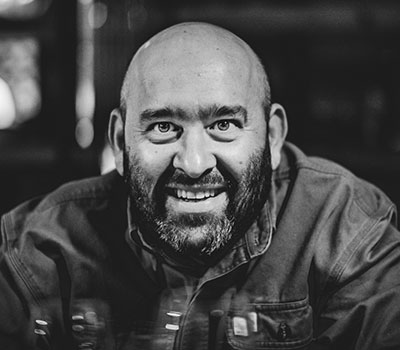

Former RN74 wine director Raj Parr build his reputation as a Burgundy expert, but you won’t find much Burgundy at Bibi Ji, the Indian restaurant in Santa Barbara that he opened with chef Jessi Singh. When not farming vineyards and making wine at Sandhi, Evening Lands and Domaine de la Côte, he manages to find time to fill the Bibi Ji list with full-on natural wines selected with Indian food in mind, from traditional oxidized whites from the Jura to new finds from the Spanish winemaking avant garde.
It’s been an unusual year for restaurants. Have you been able to do a lot of outdoor dining?
We’ve had outdoor dining whenever the governor has approved it. And takeout— we never stopped that except for the lockdown. We have a little bottle shop, and we’re just trying to make it work for our staff and keep things going.
The Bibi Ji list has to be pretty weird for Santa Barbara: natural wines labeled as Vin de France, oxidative whites, skin-contact garnacha blanca from Catalunya… How do these wines play in Santa Barbara?
When we opened two years ago, the list was definitely esoteric [ for Santa Barbara ]. I thought, let’s do Indian food and natural wine—the wine scene here is very monolithic, in a way, so I said let’s go out of the box and do something that will work with the food. Now there are at least three other places in town that have followed suit. Satellite, Venus in Furs—definitely the wine lists are getting more eclectic. The wine crowd here is quite young and adventurous.
We don’t have many domestic wines. Some Lo-Fi and stuff, but I don’t even have any Sandhi or Domaine de la Côte on the list. With the food, chardonnay and pinot isn’t really a natural fit. Pinot noir is just too delicate for the food, unless it’s something slightly more adventurous, like from the Jura. We have one or two [including Burgundy], but also I want to keep the wine list affordable. This is not a museum piece, these are fresh wines that come and go. It’s all about the cuisine.
It’s interesting that at an Indian place, 60 percent of your wine sales are red.
If people are ordering wine, they’ll always order a bottle of red, and maybe just a glass of white. People think of riesling with spice, but a lot of Indian food is actually better with light, chilled reds.
You list the Benoît Lahaye Violaine Champagne as your most popular wine. Why did that sell well, even though it’s quite a bit more expensive than most wines on your list, at $195?
It’s a tiny producer, biodynamic, and Violaine is a little pinot-based cuvée he makes. He’s an amazing guy, just a tiny, tiny producer who makes mostly Ambonnay and Bouzy, mostly pinot. I love the weight and the texture of the wine, and this is one of the most special Champagnes out there.
Three of your top ten wines hail from Jura and Savoie. What’s going on there? Does the staff have to hand-sell it, or are people just picking those wines off the list?
People pick the wine off the list! With the food, that’s the wine that works the best, those salty, crunchy wines.
And we sell more orange wine than we could ever imagine, because with Indian food and spice, it works so well. That’s something I learned opening this restaurant; it’s the most perfect match. Chicken tikka, or the butter chicken, something that is not super-spicy, and slightly richer, it’s just magic.
Have any new approaches to selling wine helped you make the most of a strange year for restaurants?
We offer wines by the glass that we sell in [750ml] growlers to go. These are wines made specifically for the restaurant. If you like something you have by the glass, you can take a piece of Bibi Ji home with you. We do a skin-contact semillon from the Napa Valley, we have a rosé—a pink wine based on palomino, mencía and alicante bouchet. And then a grenache from Santa Rita Hills. All in kegs, all no additives, nothing.
Longtime senior editor at Wine & Spirits magazine, Luke now works for the Stanford Technology Ventures Program.
This is a W&S web exclusive. Get access to all of our feature stories by signing up today.
















